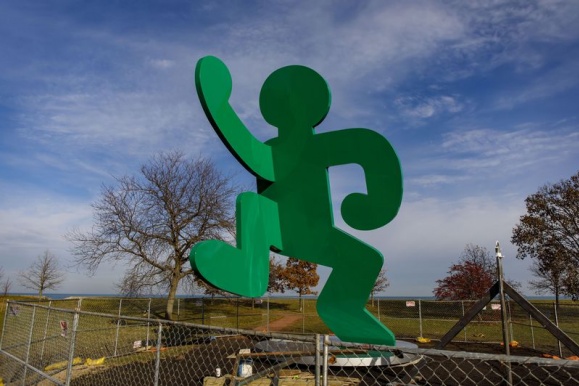
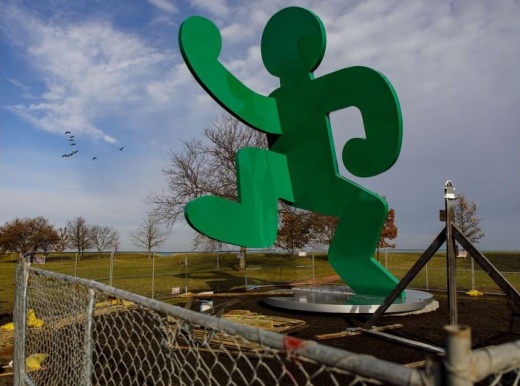
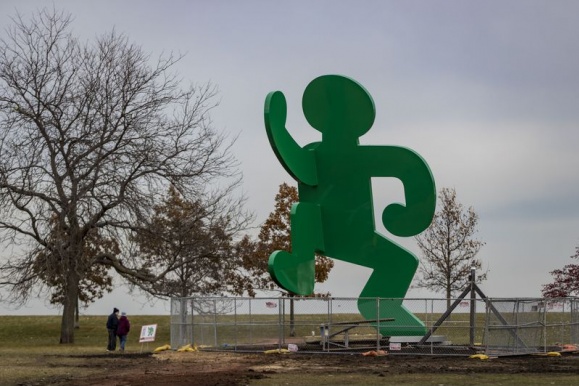
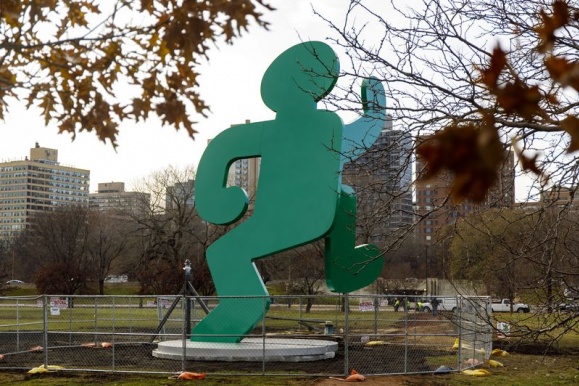
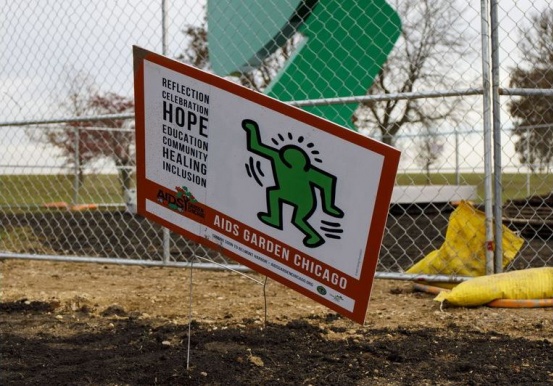
|
Chicago, IL Verenigde Staten |
Belmont Harbor | Aids Tuin Chicago |
sinds 20 December 2019 onbekend |
Five quick facts about the giant new Keith Haring sculpture installed on the North Side lakefront over the weekend:
1. It will be a focal point of the forthcoming AIDS Garden Chicago, a 2.5-acre lakeside park memorializing the battle against the HIV/AIDS public health crisis of the 1980s and ‘90s and continuing into today. AIDS Garden Chicago is a longtime project of Ald. Tom Tunney (44th). The project lost momentum when the 2008 financial crisis hit, “but then about two-and-a-half years ago, I thought, Look, we need to resurrect these plans because if our generation doesn’t do it, it’s never going to happen,” said Tunney in an interview Monday. “If we don’t memorialize this, people will forget what a crisis it was and the fact that government did not get involved with the AIDS crisis realistically until Bill Clinton became president (in 1993). We had 10 years of government indifference on the subject."
2. The location is purposeful. The garden is adjacent to the old Belmont Rocks, a set of tiered limestone slabs on the lakefront south of Belmont Harbor that became a place for gay Chicago to congregate in the open, beginning in the 1960s, in a time when gay bars still blacked out their windows, and continuing through the 1990s. “It was the gathering place outside for the community for many years,” said Tunney, himself an AIDS activist who was Chicago’s first openly gay alderman when first elected in 2003. “It was the identifiable space in the beginning of the AIDS epidemic.” The rocks were removed in a conroversial 2003 lakefront protection project but live on in a Facebook page “A Place for Us: LGBTQ Life at the Belmont Rocks.”
3. The sculpture “Self-Portrait” is, at 30 feet tall, the largest-ever edition of Haring’s iconic celebratory figure, rendered in what one observer called “kind of a grass-green.” Haring became renowned for his playful pop- and graffiti-inspired art in the 1980s and for activism to force the government to recognize the AIDS crisis. Before he died in 1990 at age 31, he established the Keith Haring Foundation, which donated the sculpture after being approached by Rosenthal Fine Art. Fundraising is about halfway to the $2.5 million project goal. Recalling Haring’s history of working with Chicago schoolkids, including a project re-mounted in a Cultural Center exhibition last year, the Haring Foundation “jumped on it right away. They have been perfect partners,” said Willa Iglitzen Lang, executive director of the Chicago Parks Foundation, which is facilitating the park project."We really want to make this about that time but also about what Keith Haring stood for during that time."
4. The assembly and installation took place over the weekend, as aluminum appendages covered in a white protective fleece were fastened onto the central steel body via some deft crane work. It was being completed Monday. “It was an intense process,” said Lang. “When the fleece fell down to the (ground) and kind of cuddled beneath it, there were people who just had tears in their eyes. It was something to see.”
5. Organizers expect the garden to be finished by next fall, turning space the Chicago Park District doesn’t program into what they hope will become a destination. While the final design remains a “work in progress,” Tunney said, the plan includes a walkway that will tell the AIDS epidemic story, a Healing Garden, a Reflection Court amid gingko trees, and the open Celebratory Lawn, which is where the “Self-Portrait” resides. The landscape architect is the firm Design Workshop. “We’ve got a lot of work to do as the landscape plan evolves and the community has their voice,” the alderman said. Also expected to be part of the site, Lang said, are some of the original Belmont Rocks salvaged when they were removed from the lakefront. “It’s going to be a point of destination, I think, for art lovers, for people of the LGBTQ community, and just for everybody who believes in unity and beauty and inclusion,” she said. “I look at it as a park with a purpose and a message.”
Photos © Brian Cassella Chicago Tribune
25 November 2019
Steve Johnson, Chicago, IL





























